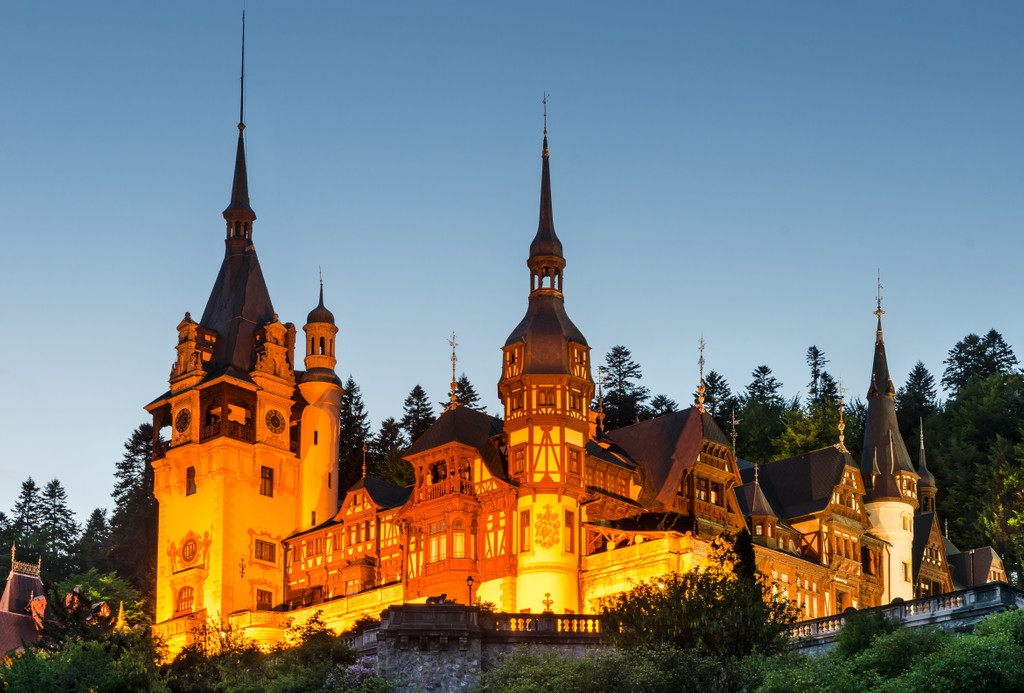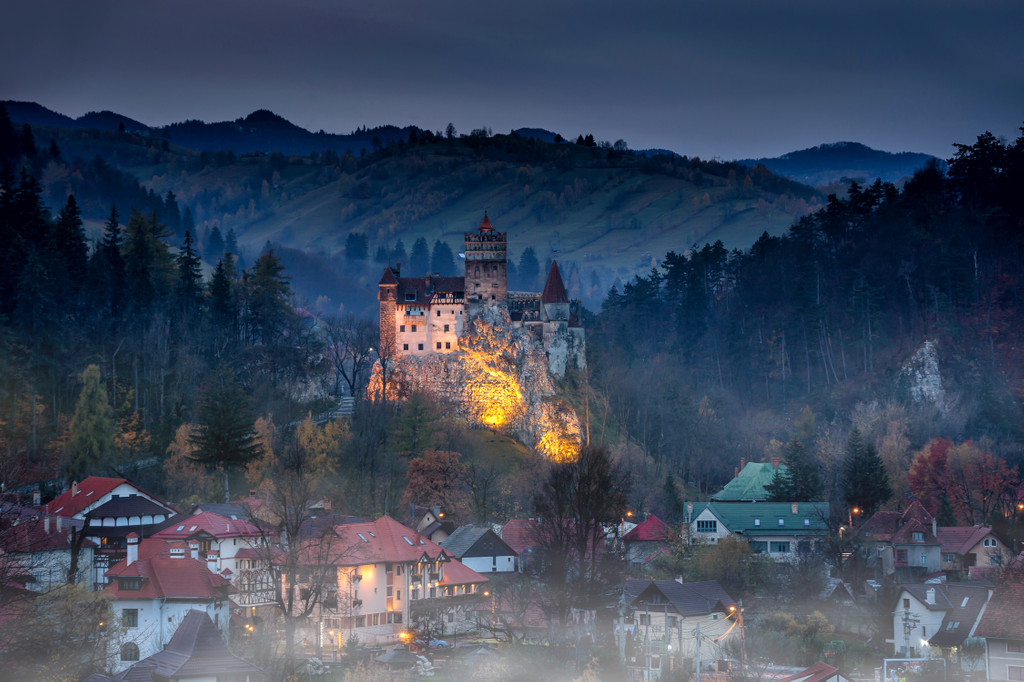Romania: home of the ostentatiously large Communist-era parliament palace, Count Dracula’s famously creepy Transylvania, and some of the very best castles in Europe. Lofty claim, you may be thinking. Lots of castles in Europe. And you’re right. But there’s something magical — and definitely spooky— about Romanian castles and their connection to dark and mysterious historical figures, like the infamous Vlad the Impaler. Here’s a breakdown of 3 of our favorite castles and how to visit.
Peleș Castle

Peleș Castle is an architectural masterpiece. Built as a summer residence for royalty, this Romanian castle’s charming alpine feel is accented by the hand-painted murals that will make you feel like you were transported straight back to the Renaissance.

The interior is a marvel, with secret passages and rooms designed in opulent styles influenced by cultures from around globe. Peleș Castle is home to a small theatre, two armories with over 4000 pieces, and one of the best collections of art in all of Europe.
Peleș was the first castle in Europe to be fully electrified and the first in the world to have central heating transmitted through the walls and the floors, all powered by its own little power plant located on the river.

Pro tip: The castle shares a beautifully landscaped property with the smaller Pelișor castle, which you can also visit, though it’s on a separate ticket. There are a couple of restaurants on the property for pit stops, so you can sit in the shade with a cold drink and just take in the view of this beautiful castle surrounded by mountains.
Bran Castle

Bran Castle is one of the most mysterious places on Earth, Romania’s number one tourist site, and well worth the hype! Nestled in the lowland mountains on the border of Vlad the Impaler’s home of Wallachia and the spooky vampire haven of Transylvania, this 14th century Romanian castle earned the nickname “Dracula’s Castle” because it is said to have been Bram Stoker’s inspiration for the character’s own spooky dwelling.
In fact, Dracula was inspired by Vlad, who earned his place in history for his obsession with, well, impaling anyone who wronged him. He once left a battlefield filled with thousands of impaled enemies. It was a great time to be in the wooden stake business, and a real unfortuante time to be on good ol’ Vlad’s bad side.

Legend says that Vlad was briefly imprisoned here, and this castle is spooky enough to satisfy the most enthusiastic vampire hunters with its gloomy interior and gothic furnishings.

Pro tip: Head here during the day to get a tour of the castle, or feel free to just wander through the grounds on your own. Stick around for evening to get some great views of Bran Castle ominously lit in the night, and try some Dracula themed cocktails and meals at the local restaurants. If you’re feeling up to it, you can do Bran Castle and Peleș Castle in the same day, with a stopover in the adorable city of Brașov in between, as they’re only separated by about 30 miles.
Corvin Castle
,%20Hunedoara&lat=45.749172&lng=22.888241)
Imagine a fairy tale castle, and you’re probably picturing something close to this jaw-dropping Gothic wonder. Corvin Castle (also known as Hunyadi Castle or Hunedoara Castle) is one of the “Seven Wonders of Romania,” and its place on that list is well earned.
Corvin Castle is one of the biggest castles in Europe, but its beautiful façade hides a dark history that earned it a place on both a list of spookiest buildings around the world. If you’re looking to trace Vlad the Impaler’s footsteps, here’s another place he was imprisoned. John Hunyadi, the 15th century Hungarian ruler of Transylvania, built the castle into what we see today. He also killed Vlad’s father and kept the future ruler of Wallachia prisoner. They had a complicated relationship.
,%20Hunedoara&lat=45.749172&lng=22.888241)
One of the most popular legends about Corvin Castle dates back to its construction. Three Turkish prisoners were enlisted to dig the 100-foot shaft through solid stone and promised their freedom upon its completion. It took them 15 years and 28 days to strike water. It probably won’t surprise you to hear that they weren’t freed afterwards. They carved an inscription on the well which legend says reads, “You may have water, but you have no soul,” but it’s debatable if that’s the actual meaning.
,%20Hunedoara&lat=45.749172&lng=22.888241)
From the moment you step onto the bridge leading up to this stunning Romanian castle, you’re entering a medieval world. Then you’re inside and hot damn. Lofted ceilings, heraldic banners hanging from pillars, an incredible Knight’s Hall, ancient furniture, and art. It’s as close to a fairytale as you’ll find anywhere in the world.